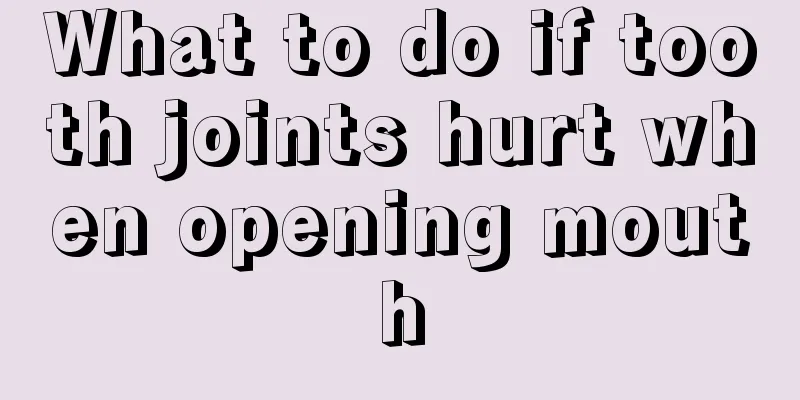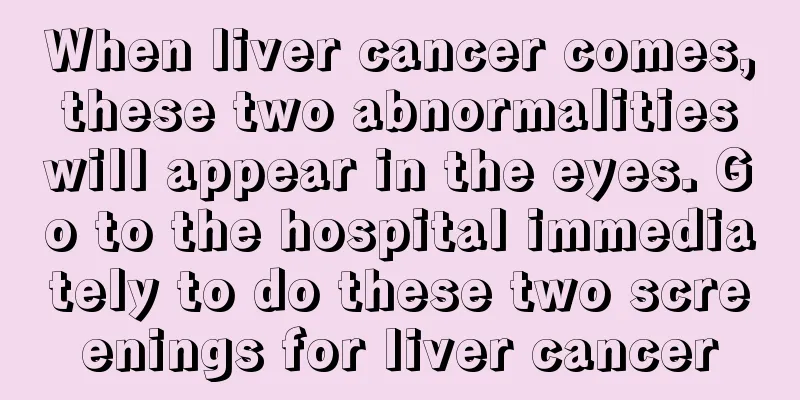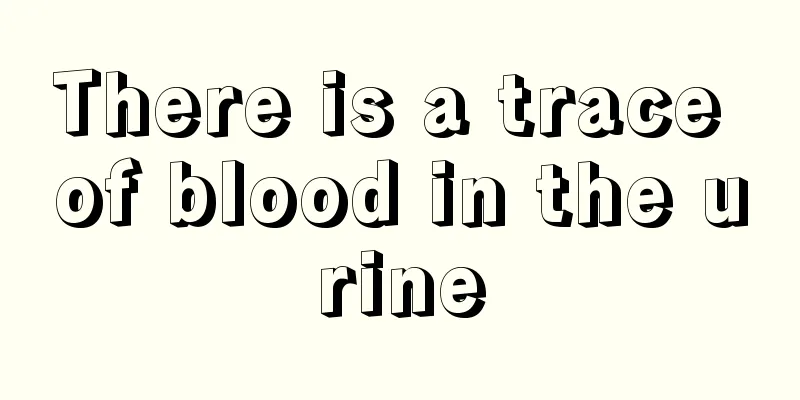What to do if tooth joints hurt when opening mouth

|
"Toothache is not a disease, but it is really painful when it happens." I believe everyone has heard this saying. In fact, toothache is generally divided into dental nerve pain and dental joint pain. What we often encounter is dental nerve pain. Dental neuralgia can be relieved by medication. But how should we treat tooth joint pain? Generally, both drug and non-drug treatments can be used. Temporomandibular joint disorder syndrome is the most common disease in the oral and maxillofacial region, and its pathogenesis is not yet fully understood. The main clinical manifestations of this disease are pain in the joint area, joint clicking during movement, and mandibular movement disorders. Most cases are joint dysfunction with a good prognosis; however, organic changes may occur in very rare cases. The main clinical manifestations of temporomandibular joint disorder syndrome include local joint soreness or pain, joint clicking and mandibular movement disorders. The pain may be located in the joint area or around the joints; it may be accompanied by tenderness of varying degrees. Joint soreness or pain is especially noticeable when chewing or opening the mouth. The snapping sound occurs when the mouth is opened. The sound can occur at different stages of mandibular movement and can be a crisp single sound or a series of fragmented sounds. Common movement obstacles include limited mouth opening, mandibular deviation when opening the mouth, and limited left and right mandibular movement. In addition, it may be accompanied by symptoms such as temporal pain, dizziness, and tinnitus. 1. Drug treatment: (1) Nonsteroidal anti-inflammatory drugs (NSAIDs): NSAIDs inhibit cyclooxygenase (COX) and prevent arachidonic acid from synthesizing prostaglandins, which are inflammatory and pain mediators, thereby exerting analgesic and anti-inflammatory effects. (2) Glucosamine sulfate: The purpose of drug treatment for osteoarthritis is to eliminate inflammation and relieve pain. Although there is currently no drug that can definitely inhibit or repair the degeneration of joint tissue and articular cartilage, evidence suggests that glucosamine sulfate may be a drug that can simultaneously improve osteoarthritis symptoms and joint structure. (3) Opioid analgesics. (4) Antidepressants. (5) Anticonvulsant drugs. (6) Corticosteroids. 2. Non-drug treatment (1) First, the influence of mental factors must be eliminated. If necessary, a psychiatrist should be consulted to develop a treatment plan and conduct psychological-behavioral therapy; (2) Correcting occlusal relationships and bad habits, such as excessive mouth opening and unilateral chewing; (3) Other non-drug treatments, such as nerve stimulation therapy, nerve block therapy, surgical treatment, physical therapy, traditional Chinese medicine acupuncture therapy, etc. |
<<: What is the reason for cold knee joints
>>: One side of the hip joint hurts when walking
Recommend
What are the symptoms of gallbladder cancer
Typical symptoms of gallbladder cancer include ga...
The difference between obesity lines and stretch marks
Stretch marks and stretch marks are two common sy...
How much does early laryngeal cancer surgery cost
How much does surgery for early laryngeal cancer ...
What are the symptoms of prostate cancer
What are the symptoms of prostate cancer? Prostat...
What are the methods for treating hypertrophic pharyngitis
If you find that you are affected by hypertrophic...
What are the dangers of lymphoma
In recent years, the incidence of lymphoma in my ...
Two surgical methods for endoscopic treatment of gastric mucosal cancer
The infiltration growth of early gastric cancer i...
Tight neck and thyroid
The thyroid gland is a very important gland in ou...
What to do if short hair sticks up at the back
Hair is a very important part of the upper body. ...
What should I do if I have advanced lung cancer and bone metastasis?
Bone metastasis is common in the late stage of lu...
What common early symptoms of colon cancer should middle-aged people be alert to?
Middle-aged people are likely to develop colon ca...
How to use pearl powder
Pearls are very common in our daily lives. What w...
What are the symptoms of glioma
There may be many friends who have not heard of t...
What are the prevention methods for uterine cancer
In recent years, uterine cancer has become one of...
If hoarseness does not heal for a long time in winter, you should be alert to laryngeal cancer
Winter is the peak season for respiratory disease...









